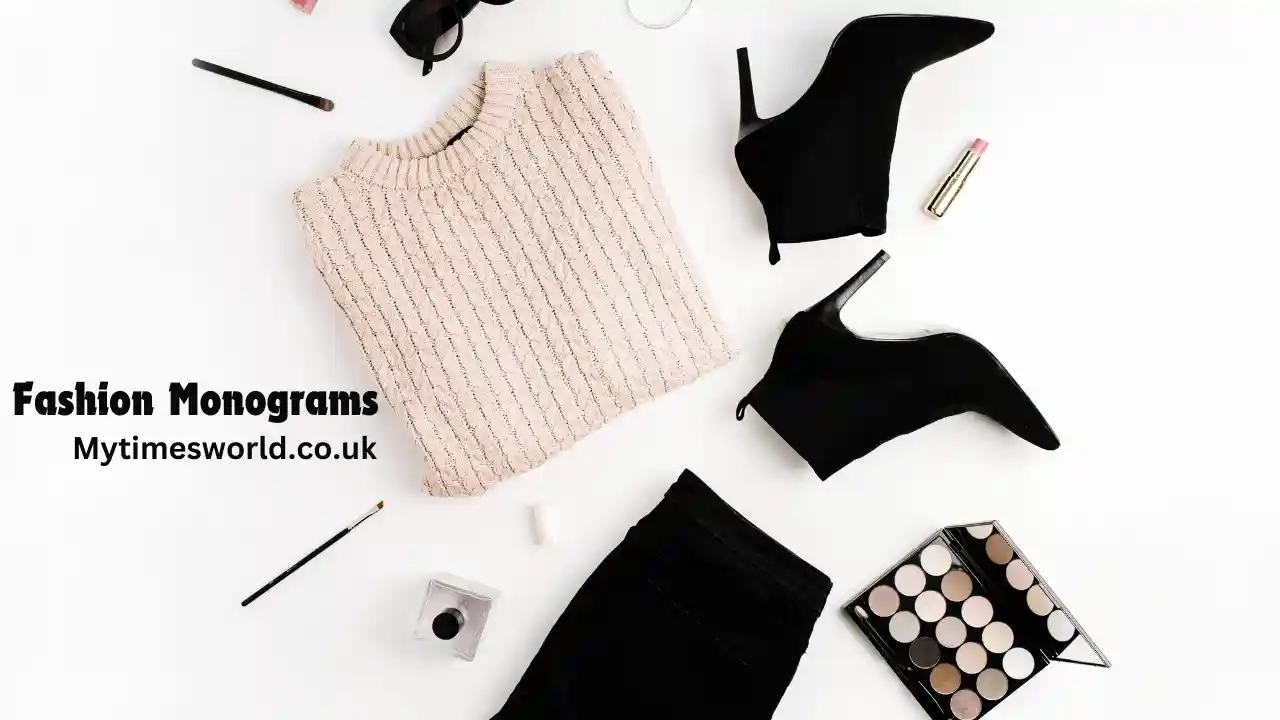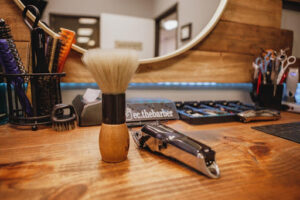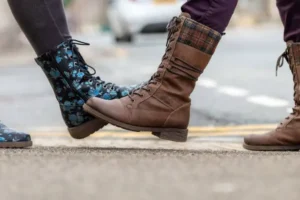French fashion is renowned for its elegance, luxury, and timeless appeal. One of the key elements that contribute to this allure is the use of monograms. These stylized initials have adorned countless fashion items, from handbags to clothing, making them symbols of prestige and sophistication. In this blog post, we will explore the evolution of French fashion monograms since 1962, tracing their history, significance, and impact on the fashion industry.
The Birth of Monograms in Fashion
Understanding Monograms
A monogram is a design that consists of two or more letters, typically the initials of a name, intertwined or combined in a unique way. Monograms serve as a form of personalization and branding. In the world of fashion, they add a touch of exclusivity and identity to products.
Historical Context
The use of monograms dates back centuries, often associated with nobility and aristocracy. In the realm of fashion, they gained popularity in the 19th century when luxury brands began to adopt this practice to distinguish their products. However, it wasn’t until the 20th century, particularly the 1960s, that monograms truly became a staple in French fashion.
The 1960s: A Decade of Change
Cultural Shifts
The 1960s were a time of significant cultural and social change. The fashion industry was influenced by the rise of youth culture, the feminist movement, and a desire for self-expression. Designers began to experiment with bold designs, colors, and patterns, moving away from the conservative styles of previous decades.
Iconic Monograms Emerge
During this transformative period, French fashion houses like Louis Vuitton, Chanel, and Dior began to introduce their monograms to the public. The Louis Vuitton monogram, featuring the iconic interlocking “L” and “V,” became an instant hit, symbolizing luxury and sophistication. This decade marked the beginning of monograms as a status symbol, with celebrities and influencers embracing these designs.
The 1970s: Monograms in Pop Culture
The Rise of Logo Mania
The 1970s saw the emergence of “logo mania” where brands heavily relied on their logos and monograms to create recognition. French fashion houses took advantage of this trend, incorporating their monograms into a variety of products, from clothing to accessories.
Iconic Collaborations
One notable collaboration during this era was between the fashion house Yves Saint Laurent (YSL) and the artist Piet Mondrian. YSL’s Mondrian dress featured bold colors and geometric shapes, capturing the essence of the time. Although it didn’t directly feature a monogram, it set the stage for how logos and branding would influence fashion.
The Role of Celebrities
Celebrities became the ultimate brand ambassadors, further popularizing monograms. Stars like Jackie Kennedy and Brigitte Bardot were often seen with Louis Vuitton bags adorned with the brand’s signature monogram. This association elevated the status of monograms in the fashion world, making them a must-have item.
The 1980s: Monograms and Luxury

The Rise of Luxury Fashion
The 1980s marked a significant shift towards luxury fashion. Brands like Chanel and Dior expanded their offerings, and monograms became synonymous with high-end products. This era also saw the introduction of new materials and innovative designs, making monograms even more desirable.
Monograms in Accessories
Accessories played a crucial role in the 1980s fashion scene. Handbags, belts, and shoes adorned with monograms became essential items for fashion-forward individuals. The popularity of the Chanel 2.55 bag, featuring the double “C” monogram, exemplified this trend.
The Influence of Fashion Shows
Fashion shows became a platform for designers to showcase their monogrammed pieces. The extravagant presentations captured the attention of the media and consumers alike, solidifying the association between luxury and monograms. Designers like Gianni Versace and Jean Paul Gaultier incorporated monograms into their collections, further fueling the trend.
The 1990s: The Playful Side of Monograms
A Decade of Experimentation
The 1990s brought a sense of playfulness to fashion. Designers began to experiment with monograms, using them in unexpected ways. This period saw the rise of streetwear, where monograms were often combined with bold graphics and colors.
The Role of Hip-Hop Culture
Hip-hop culture played a significant role in popularizing monogrammed items. Rappers and artists embraced luxury brands, often flaunting their monogrammed accessories in music videos and performances. This crossover between high fashion and street culture made monograms accessible to a broader audience.
Iconic Fashion Moments
Memorable fashion moments of the 1990s included Naomi Campbell and Kate Moss walking the runway in outfits adorned with monograms. The Versace spring/summer 1991 collection featured pieces that highlighted the interplay between monograms and vibrant patterns, showcasing the decade’s bold aesthetic.
The 2000s: Monograms Reinvented
A New Era of Branding
The early 2000s saw a shift towards digital marketing and online shopping. Brands adapted their strategies to reach a new generation of consumers. Monograms continued to evolve, becoming more versatile and integrated into various fashion categories.
The Rise of Streetwear
Streetwear brands began to adopt monograms, incorporating them into their designs. This fusion of high fashion and street style allowed monograms to remain relevant in a rapidly changing fashion landscape.
Collaboration and Limited Editions
Collaborations between luxury brands and streetwear labels became a significant trend. Louis Vuitton collaborated with artists like Takashi Murakami, producing colorful monogram bags that appealed to younger audiences. These limited-edition pieces created buzz and excitement, further solidifying the monogram’s status.
The 2010s: Monograms in the Digital Age
The Impact of Social Media
The rise of social media platforms like Instagram transformed the way fashion brands interacted with consumers. Monograms became a prominent feature in online marketing campaigns, allowing brands to showcase their iconic designs to a global audience.
Influencer Culture
Influencers played a crucial role in promoting monogrammed products. Fashion bloggers and social media stars shared their outfits, often featuring items adorned with monograms. This new wave of marketing created a sense of aspiration, making monograms even more desirable.
Sustainable Fashion and Monograms
As the fashion industry began to address sustainability, some brands started to focus on the longevity of their products. Monograms were reimagined to emphasize timelessness and quality, encouraging consumers to invest in pieces that would last.
The 2020s: A Contemporary Perspective

Modern Interpretations of Monograms
Today, monograms are still a significant aspect of French fashion. Designers continue to experiment with their designs, exploring new ways to incorporate monograms into their collections. The emphasis is now on personalization and individuality, with brands offering customizable monogram options.
The Role of Technology
Technology has further influenced the evolution of monograms. Brands are leveraging augmented reality and virtual reality to create immersive shopping experiences. Consumers can visualize monogrammed products in new and exciting ways.
Inclusivity and Diversity
The fashion industry is increasingly recognizing the importance of inclusivity and diversity. Brands are embracing a broader range of styles, designs, and monogram variations that resonate with different cultures and identities.
Conclusion
The evolution of French fashion monograms since 1962 reflects the changing landscape of the fashion industry. From their beginnings as symbols of luxury to their current status as versatile and personalized designs, monograms continue to captivate consumers around the world. As fashion evolves, so too will monograms, adapting to new trends while retaining their timeless elegance.
In conclusion, the journey of monograms in French fashion is a testament to the creativity, innovation, and cultural significance of the fashion industry. Whether adorning handbags, clothing, or accessories, monograms will always hold a special place in the hearts of fashion lovers, serving as reminders of the elegance and artistry that define French fashion.







Be First to Comment